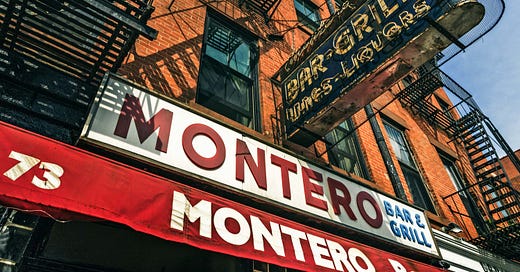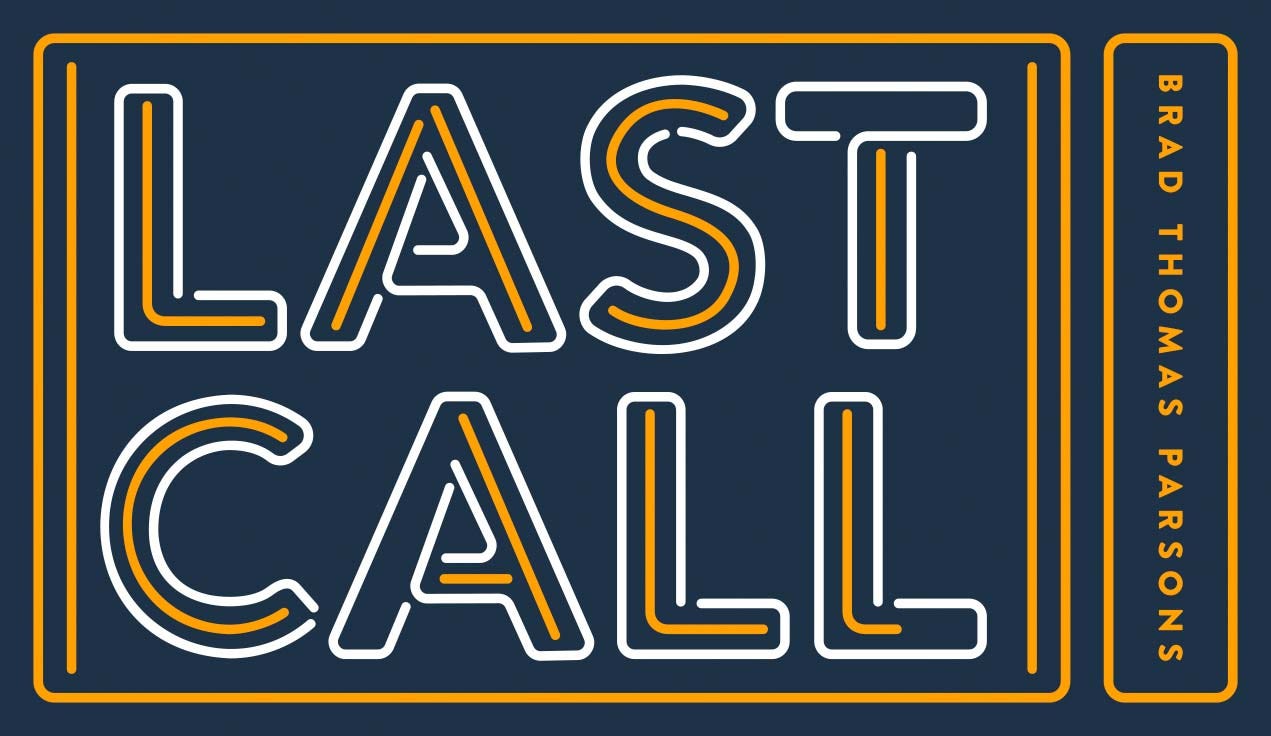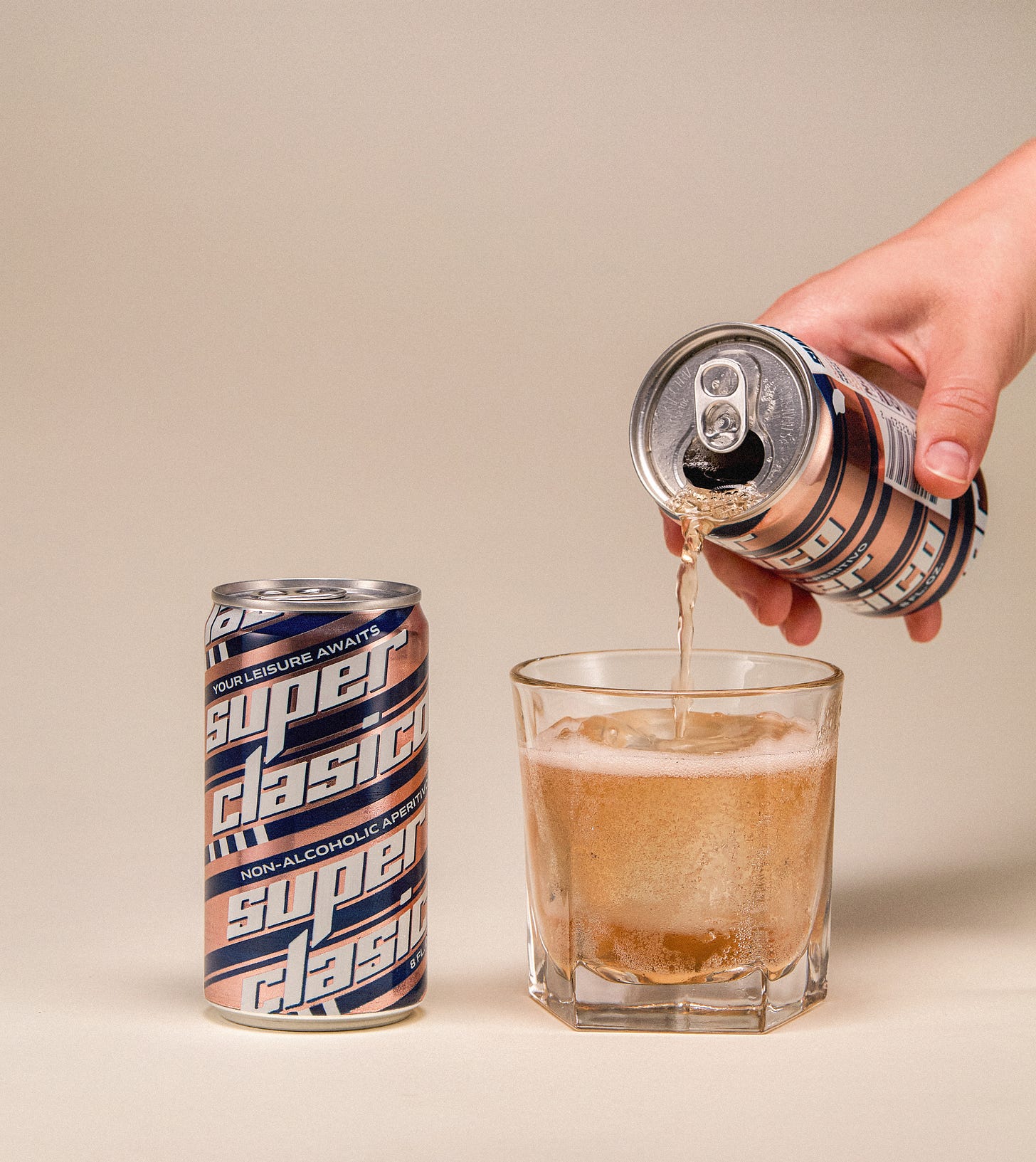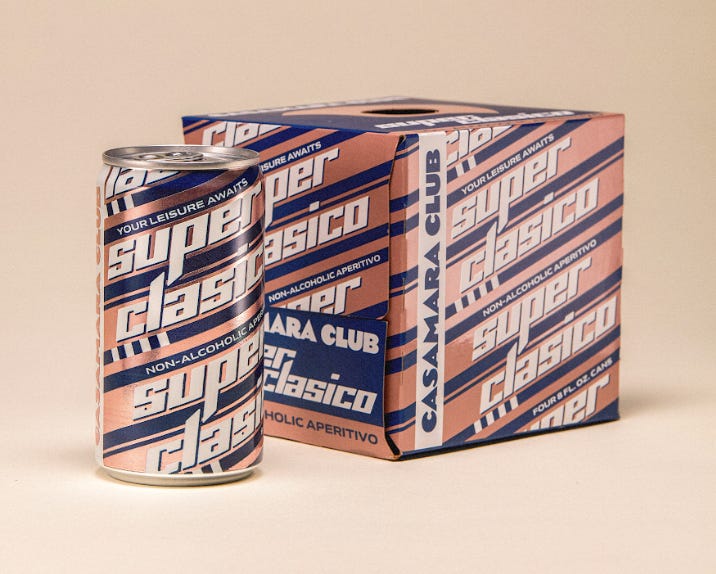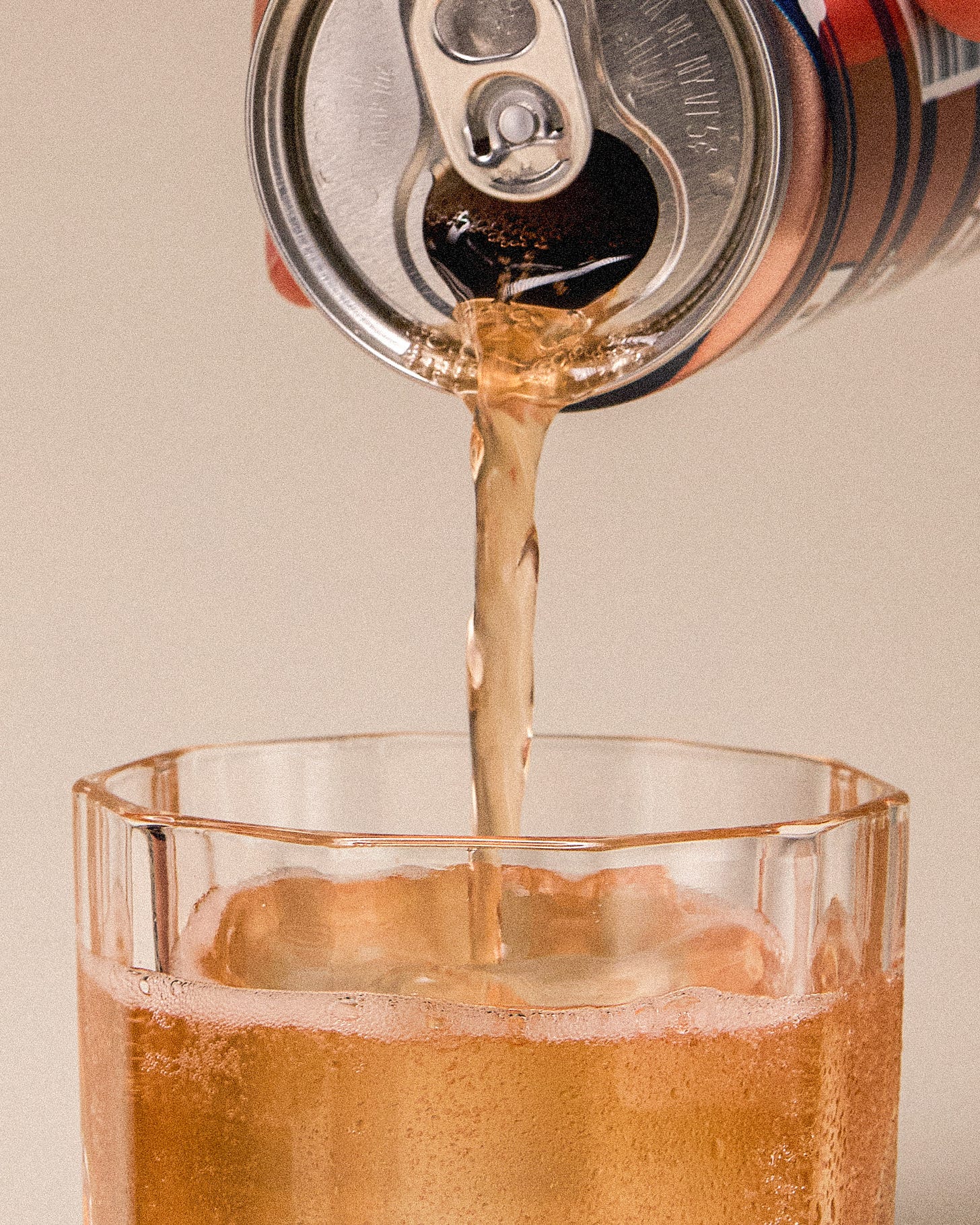City Guide: Brooklyn Heights, Brooklyn
Montero's, Montague Diner, Inga's, L'Appartement 4F, Sahadi's...
Welcome to City Guides, a paid-subscriber exclusive featuring personal recommendations for my favorite neighborhood spots for drinking and eating around New York City and beyond.
Today’s LAST CALL City Guide is brought to you thanks to the generous support of Casamara Club.
I’ve been a big fan of Casamara Club since I first met with founders Jason LaValla and Erica Johnson in 2018 when they were preparing to launch their creative lineup of easy-drinking, botanical-based “leisure sodas” inspired by the distinctive flavor profiles of regional Italian amaro.
And today they’re launching a brand new addition to their stylish portfolio, Superclasico—their very first cocktail-strength non-alcoholic drink. Think of if it as a bittersweet, Italian-style aperitivo in a supercharged 8-ounce can.
Superclasico channels the spirit of the iconic Negroni by way of Italy’s sunset-hued, ready-to-drink, non-alcoholic sodas like Sanbittèr and Crodino.
Like all of Casamara Club botanical sodas, Superclasico is made with real ingredients—no artificial flavors, no sugar substitutes, and no preservatives—and is sweetened like a real cocktail, with top quality Demerara cane sugar.
Superclasico’s sprezzatura style starts with a big, bittersweet punch from Italian chinotto along with an aromatic brightness from juniper berries. “We import the chinotto directly from Italy,” says LaValla. “I think that single ingredient, and the effort we go through to obtain it, makes a huge difference in terms of taste, and for me is so essential to recreating that authentic Italian flavor experience.” In addition, you’ll experience tannic notes from red currant and allspice, with kola notes on the mid-palate and a pleasant, lingering bittersweet finish softened by Madagascar vanilla.
Superclasico is ready to drink straight from the can, or pour it into an ice-filled glass garnished with an orange slice. And it’s the perfect companion for an at-home aperitivo spread of your favorite salty snacks.
“Your leisure awaits…”
City Guide: Brooklyn Heights, Brooklyn

During the American Revolutionary War, the elevated plateau of the terrain of what is now Brooklyn Heights offered strategic views and was a heavily fortified position. And it was here, on August 27, 1776, during the Battle of Brooklyn, where General George Washington thwarted capture by the British troops (who would go on to occupy Brooklyn and Manhattan for 7 years) with a skillful nighttime escape across the East River with his surviving troops and remaining supplies and lived to fight another day.
As the closest Brooklyn neighborhood to Manhattan, Brooklyn Heights would come to be known as New York’s first suburb. Hezekiah Pierrepont, a merchant, farmer, one-time gin distiller, and landowner had been developing on 60 acres of purchased land on what was then called Clover Hill and later Brooklyn Village. As a prominent investor in the New York and Brooklyn Steam Ferry Boat Company, Pierrepont swayed Robert Fulton to offer regular service to the area in 1814, helping drive more traffic to what is now Brooklyn Heights. Soon a grid system of streets and lots inspired new arrivals to buy and develop property, and by 1860 there were more than 600 homes built, compared to only 7 in 1807.
The completion of the Brooklyn Bridge in 1883 made Brooklyn Heights even more accessible from Manhattan. The shadow of Robert Moses looms large in the neighborhood in the 1940s and 1950s with his development of the Brooklyn-Queens Expressway, whose construction razed historic brownstones replacing them with rowhouses and essentially erased the northwest corner of the neighborhood. In 1965, in an effort to keep Moses from building the BQE along Henry Street, Brooklyn Heights became the first NYC neighborhood to be designated a National Historic Landmark.
Another positive was the eventual development of the Brooklyn Promenade, which still stands with its unrivaled panoramic views encompassing the Statue of Liberty, the skyline of Manhattan, the Brooklyn and Manhattan Bridges, the Brooklyn Waterfront, and Brooklyn Bridge Park.
Brooklyn Bridge Park between the BQE and the East River is one of the area’s more recent developments and its 6 piers and popular parks and playing fields continue to draw locals and tourists alike.
The neighborhood borders of Brooklyn Heights are Atlantic Avenue on the south, Old Fulton Street to the north, Cadman Plaza West on the east, and the BQE/Brooklyn Bridge Park/East River to the west.
Brooklyn Heights is accessible by subway (2,3,4,5,A,C,N,R,W) and the B25, B61, B63, and B65 buses. But you’ll do a lot of walking within its borders.
Brooklyn Heights Fun Facts!
Where the Streets Have Known Names: Clinton Street (for U.S. senator, mayor of New York City, seventh and ninth governor of New York, and three-time Presidential candidate DeWitt Clinton), Fulton Street (for Robert Fulton, who was responsible for the steam ferry service between Brooklyn Heights and Manhattan), Hicks Street (for brothers John and Jacob, early colonial settlers in Brooklyn), Joralemon Street (originally called Ramsen’s Lane, named for Tumis Joralemon, first person to own a brick house in Brooklyn), Montague Street (for Lady Mary Wortley Montague, a relative of Hezekiah Pierrepont), Pierrepont Street (for merchant, farmer, and developer Hezekiah Beers Pierrepont).
The Fruit Streets: How did Orange, Pineapple, and Cranberry Streets get their colorful names? There are a couple of theories, both dating to the 1800s. One story involves prominent Brooklyn citizen Lady Middagh, who found it pretentious that the neighborhood streets were named after wealthy landowners. Late one night she replaced the signs with the names of her three favorite fruits, and the city later made them official. Another take claims that the Hicks Brothers (of Hicks Street fame) sold exotic fruit and named the streets to as a strategy to advertise their wares.
No Sleep Till Brooklyn: In May 2013, on the 1-year anniversary of his death, Palmetto Playground, on the corner of State Street and Columbia Street, was renamed Adam Yauch Park (27 State Street), after the late musician, rapper, founder of the Beastie Boys, filmmaker, and Brooklyn Heights native. Respect.
Nothing to See Here: 58 Joralemon Street may seem like another stunning Greek Revival home lining a tree-lined block, but the blackened windows are a clue that something’s amiss. In fact, the structure hides a subway ventilator that also serves as an emergency exit for the 4/5 train line nine stories below the surface.
Can’t Get There From Here: Three charming historic dead-end streets include Grace Court Alley, Love Lane, and Hunts Lane.
And.. Action! Movies filmed in Brooklyn Heights include: Moonstruck, Three Days of the Condor, Bridge of Spies, Prizzi’s Honor, Mo’ Better Blues, Age of Innocence, Taxi Driver, Superman, Catch Me If You Can, and The Godfather.
Stars—They’re Just Like Us!: Home to many well known actors, including John Krasinski and Emily Blunt, Peter Dinklage, Matt Damon, Adam Driver, Rebecca Hall, Amy Schumer, Paul Giamatti, and Ebon Moss-Bachrach.
Arts & Leisure: The neighborhood was also home to Truman Capote, W.H. Auden, Norman Mailer, Gypsy Rose Lee, Salvador Dali, Arthur Miller, W.E.B. Du Bois, Walt Whitman, Harriet Beecher Stowe, Carson McCullers, and Hart Crane.
Drinking & Eating in Brooklyn Heights
Montero Bar & Grill


